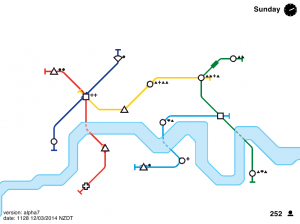Weekend reading
Two articles caught our attention this week that we thought worth sharing.
How Design Can Help Build a ‘Transit Culture’ - Eric Jaffe, The Atlantic Cities
Increasingly, transit agencies are realizing the importance of the user experience and public perception to ridership. TriTAG has long maintained that bus-wrap ads not only make taking transit unpleasant, but they also severely dilute GRT’s brand into rolling advertisements. We’re hopeful that wrap ads never appear on the ION, and that the Region eventually realizes how much brand-value is lost by covering up entire sides of their buses.
“The key to an effective transit brand, says Doble, is to connect a design with the local culture of the city itself.”
The importance of associating transit with local identity should not be overlooked. We’re encouraged to see the Region considering ION stop design concepts that link with the history and architecture of the communities they connect.
overcrowding and underfunding: the lessons of “mini metro” - Jarret Walker, Human Transit
Mini Metro is a simple yet challenging game where you’re tasked with deciding where to run subway lines to keep up with growth in an expanding city.
“The slow trickle of funding – most of it spent just keeping up with that spread – is never enough to stop overcrowding. Sooner or later, transit agencies have to invest in core capacity – new lines or bigger platforms where the failure points are, which is often downtown. But to too many local leaders, that’s read as ‘spending too much money downtown instead of in the neighborhoods,’ or ‘they already have a transit line, so why are they getting another when my district/city/ward has none?’”
These lessons may bear relevance to local debates, both in terms of building capacity into our central transit corridor, and also the need for intensification to avoid spreading our transit and other resources too thin over long distances.
